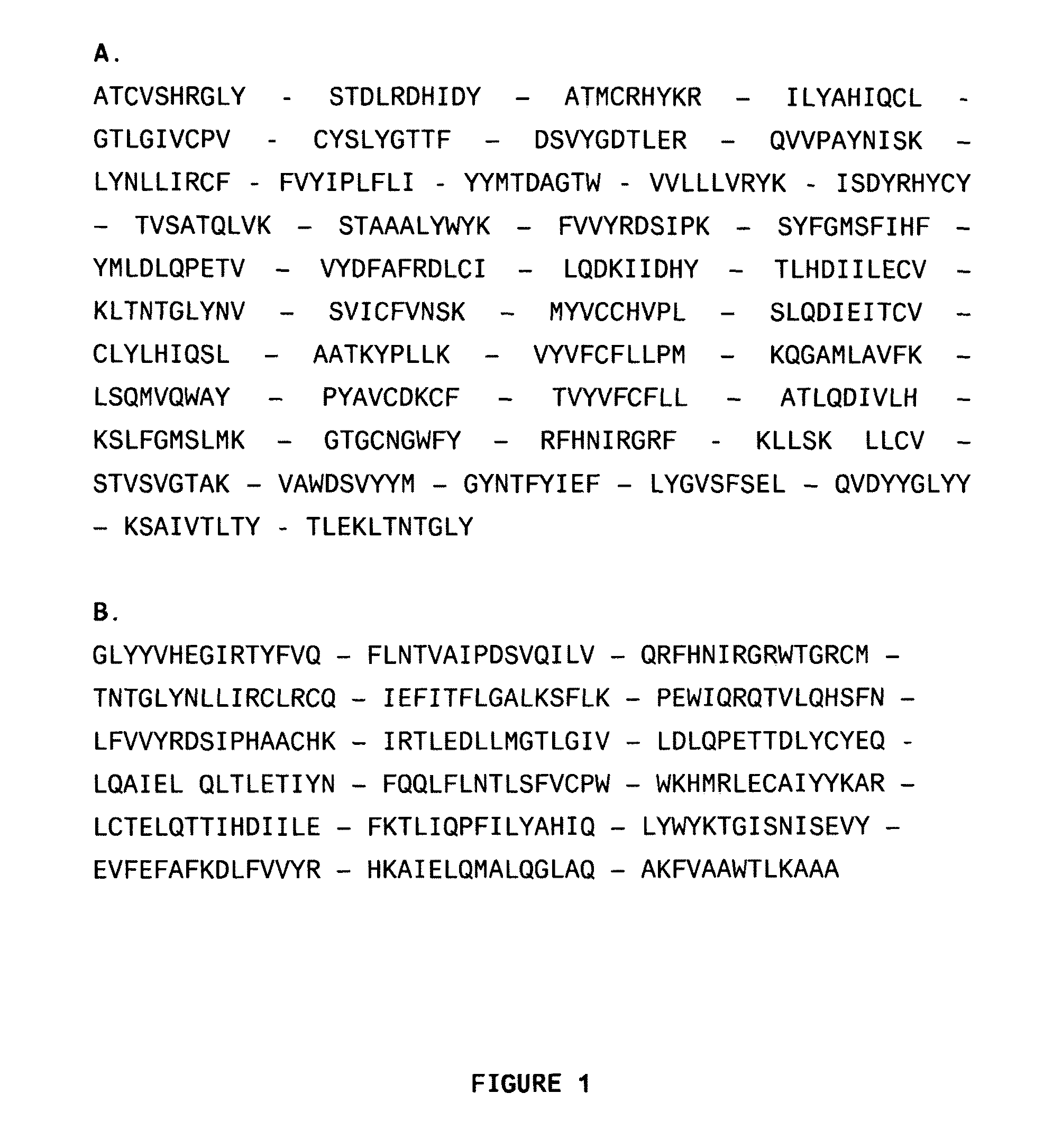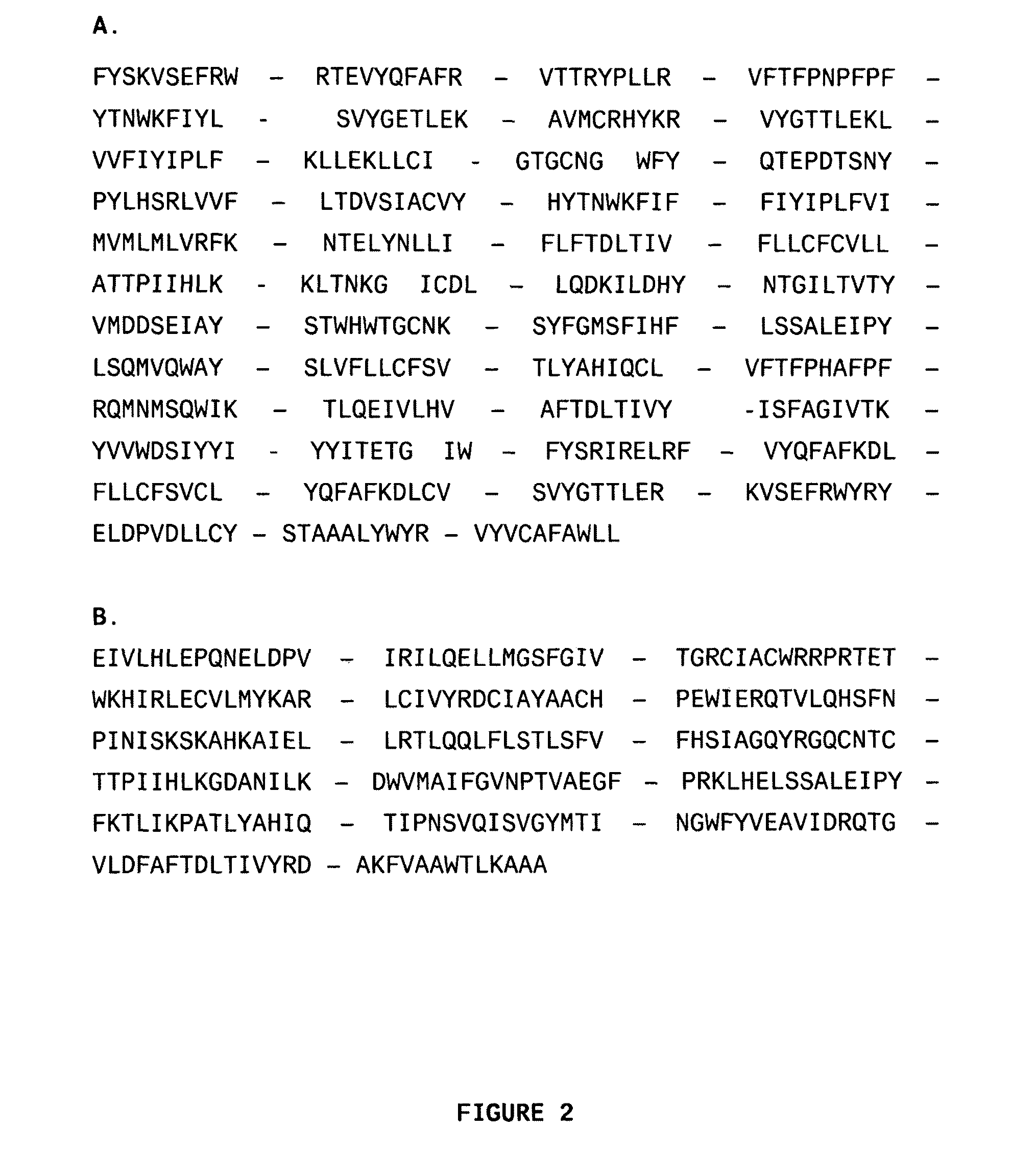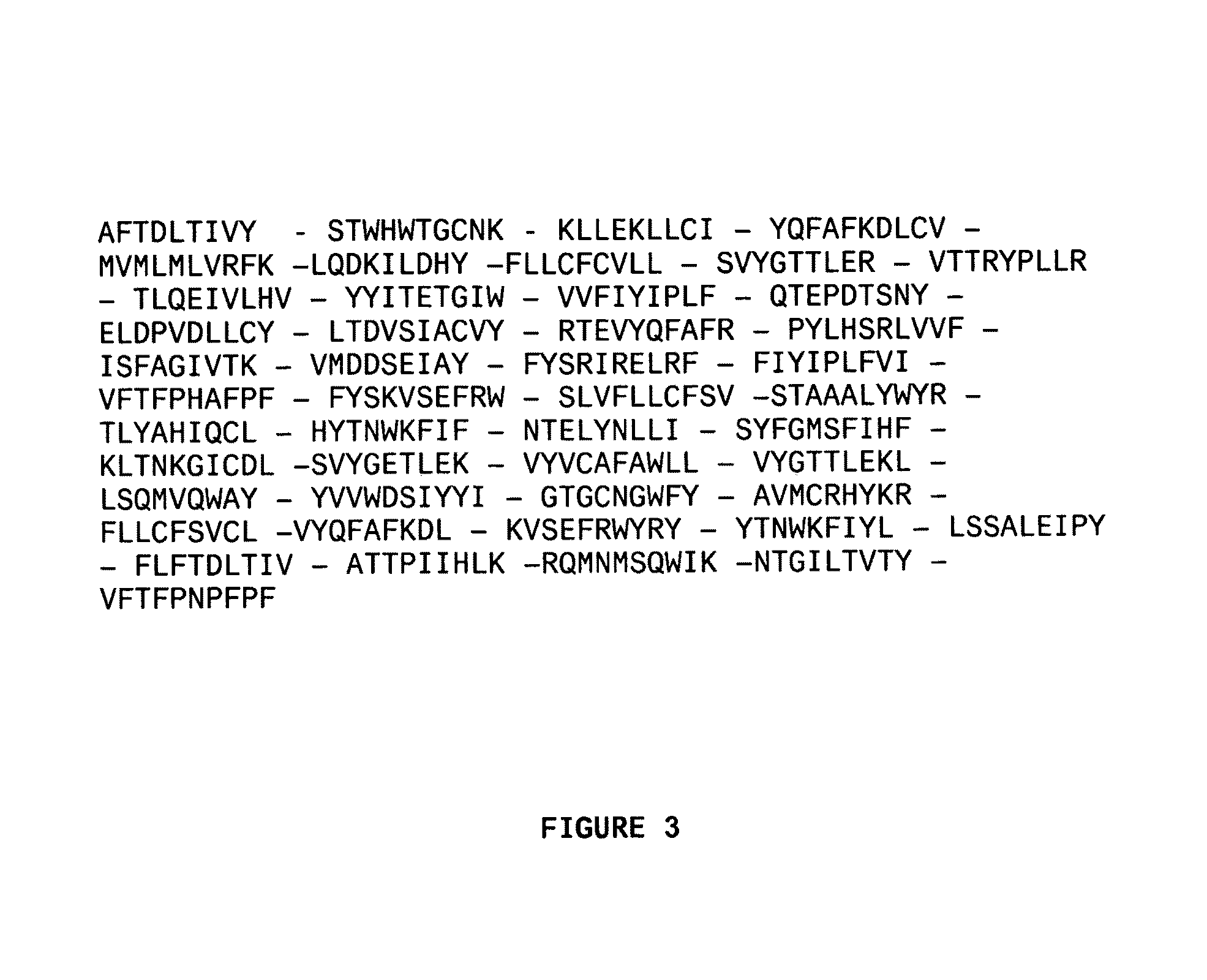HPV polyepitope constructs and uses thereof
a technology of human papillomavirus and constructs, which is applied in the field of human papillomavirus (hpv) polyepitope constructs, can solve the problems of not being able to evaluate the impact of hpv vaccination on the incidence of cervical cancer for decades, and no benefit for women with already existing hpv infection, and the treatment (surgery) of hpv infection is often unsatisfactory
- Summary
- Abstract
- Description
- Claims
- Application Information
AI Technical Summary
Problems solved by technology
Method used
Image
Examples
example 1
HLA Class I Competition Binding Assays Using Soluble HLA
[0172]The following example of peptide binding to soluble HLA molecules demonstrates quantification of binding affinities of HLA class I and class II peptides.
[0173]Epstein-Barr virus (EBV)-transformed homozygous cell lines, fibroblasts or transfectants were used as sources of HLA class I molecules. Cell lysates were prepared and HLA molecules purified in accordance with disclosed protocols (Sidney et al., 1998; Sidney et al., 1995; Sette, et al., 1994).
[0174]HLA molecules were purified from lysates by affinity chromatography. The lysate was passed over a column of Sepharose CL-4B beads coupled to an appropriate antibody. The antibodies used for the extraction of HLA from cell lysates are W6 / 32 (for HLA-A), and LB3.1 (for HLA-DR).
[0175]The anti-HLA column was then washed with 10 mM Tris-HCL, pH8, in 1% NP-40, PBS, and PBS containing 0.4% n-octylglucoside and HLA molecules were eluted with 50 mM diethylamine in 0.15M NaCl contai...
example 2
Polyepitope Construct Design
[0187]Each designed DNA construct contains HLA-restricted epitopes which bind to at least one HLA molecule with an affinity <500 nM and preferably less than 100 nM (tables 3-6 in Example 1). Most of these epitopes were demonstrated to be immunogenic in the respective HLA transgenic mice when administered as a pool of peptides emulsified in IFA (tables 8-9 in Example 3).
[0188]The epitope order and amino acid spacers in the constructs were designed to avoid generation of junctional epitopes and to maximize proteosomal processing. The amino acid sequences were back-translated using a mammalian codon usage table and the on-line back-translation tool both provided by Entelechon (Germany). The DNA sequences were inserted into pMB75.6 vector using PstI and BamHI restriction sites. A Kozak sequence, a mouse Igkappa signal sequence (MGMQVQIQSLFLLLLWVPGSRG, SEQ ID NO 131), and a stop codon were also included. The respective amino acid and DNA sequences of the const...
example 3
Immunogenicity of HPV-Derived HLA-Class I-Restricted Epitopes Encoded in a HPV DNA Polyepitope Construct
[0189]The immunogenicity of HPV HLA class I-restricted epitopes encoded in the DNA constructs was tested in the relevant HLA transgenic mice. The evaluation of the immunogenicity of HPV-derived HLA-A02-, HLA-A11- and HLA-A24 and HLA-A01-restricted epitopes encoded in different DNA constructs was done using the following protocol. HLA transgenic mice (F1 HLA-A02 / KbxBalb / c, HLA-A11 / Kb, HLA A01 / Kb and HLA-A24 / Kb transgenic mice) were immunised with one of the selected DNA constructs. To ensure an equal distribution of mice between different groups, a randomisation procedure based on body weight was performed. Female and male mice (age between 8 and 24 weeks) were ranked by body weight, extreme light or heavy animals were excluded. The remaining animals were grouped by sequentially assigning animals for the 2 experiments.
DNA Immunization
[0190]Mice were pre-treated with cardiotoxin (Si...
PUM
| Property | Measurement | Unit |
|---|---|---|
| concentrations | aaaaa | aaaaa |
| concentration | aaaaa | aaaaa |
| concentration | aaaaa | aaaaa |
Abstract
Description
Claims
Application Information
 Login to View More
Login to View More - R&D
- Intellectual Property
- Life Sciences
- Materials
- Tech Scout
- Unparalleled Data Quality
- Higher Quality Content
- 60% Fewer Hallucinations
Browse by: Latest US Patents, China's latest patents, Technical Efficacy Thesaurus, Application Domain, Technology Topic, Popular Technical Reports.
© 2025 PatSnap. All rights reserved.Legal|Privacy policy|Modern Slavery Act Transparency Statement|Sitemap|About US| Contact US: help@patsnap.com



